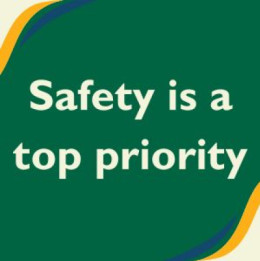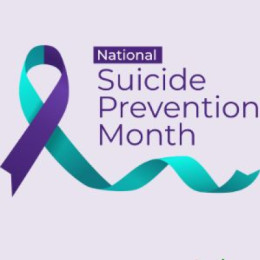Posted On: October 29, 2020 by Community HealthCare System in: Community health news News
The Kansas Department of Health and Environment tracks 14-day COVID-19 positivity rates in every county, and each county is given a rating of green, yellow, or red.1 The most recent update from KDHE indicates that both Nemaha and Jackson counties are in the red. Pottawatomie and Marshall counties are yellow along with Wabaunsee, Shawnee, and Geary. Riley County and Douglas County are green. To find the most current information, visit the KDHE COVID-19 website and select Nursing Home Metrics.
Besides indicating disturbing growth in COVID-19 spread, the color coding of the counties also affects whether nursing homes and assisted living facilities can allow visitors according to strict regulations from the Kansas Department of Aging and Disability Services and the Centers for Medicare and Medicaid Services. Because Nemaha County is red, Community HealthCare System is currently unable to allow visitors to Eastridge Skilled Nursing Facility, and staff must be tested twice each week. Visits with COVID-19 precautions are available by appointment at Redbud Assisted Living in Onaga and St. Marys Manor as long as regular testing of staff does not reveal positive cases and/or the county does not progress to red. Staff members are tested weekly according to regulatory requirements for counties in the yellow category.
Disallowing visitors is difficult for residents, families, and staff. As the Thanksgiving holiday approaches, family members will want to visit nursing home residents. If the spread of COVID-19 doesn’t slow down in Nemaha County, these visits will not be possible at Eastridge.
Those who wish to visit family members in nursing homes or assisted living facilities and those who want to help the most vulnerable in our society maintain their social connections can help by ensuring that they take every precaution available to prevent the spread of COVID-19. Wearing a mask, adhering to social distancing guidelines by avoiding large gatherings and remaining at least six feet away from others when masks aren’t worn, and washing hands frequently are simple steps that everyone can take. Please encourage friends, co-workers, and neighbors to take these steps as we head into the winter when outdoor activities may not be possible and disease can and will spread more easily.
As Kansas continues to see a record number of COVID-19 cases, another danger looms: Healthcare facilities are becoming increasingly stressed. Northeast Kansas has thus far avoided the levels of transmission that are making national headlines in the northwest part of the state, but we are hearing news of full or nearly full hospitals in Wichita, Topeka, Kansas City, Salina, Hays, and other towns and cities, which means our state’s capacity to care for patients could be in danger. Keeping essential workers healthy and able to care for patients is also a grave concern in areas with high rates of community spread. Invoking emergency plans to open alternative facilities is one option that is being explored in some areas of the state, but ensuring that such facilities have adequate staffing and supplies is a colossal undertaking.
Simple precautions can help prevent these difficulties. Wearing a mask or face covering reduces the chances that an infected person will infect others. A recent study from the University of Kansas found that although counties with mask mandates didn’t eliminate COVID-19 transmission completely, cases stopped increasing. In contrast, counties without mask orders experienced a surge in infection rates. In Nemaha County, COVID-19 cases are up 204% in the last month. In Riley County, where the city of Manhattan has adopted a mask ordinance and where Kansas State University has adopted strict mask rules and other precautions for students, faculty, and staff, positivity rates have fallen from around 26% at the beginning of August to under 2%, providing further evidence in our local area that masks are effective.
Find the latest information about COVID-19 cases in Kansas.
1 Green means a county has a 14-day positivity of less than 5% or fewer than 20 tests performed. Yellow means the county’s positivity rate is between 5 and 10% or that positivity is less than 10% and total tests are under 500 and testing rate is under 2,000 people per 100,000 population. Red means that the county has a positivity rate above 10% and does not meet green or yellow criteria.











0 comments